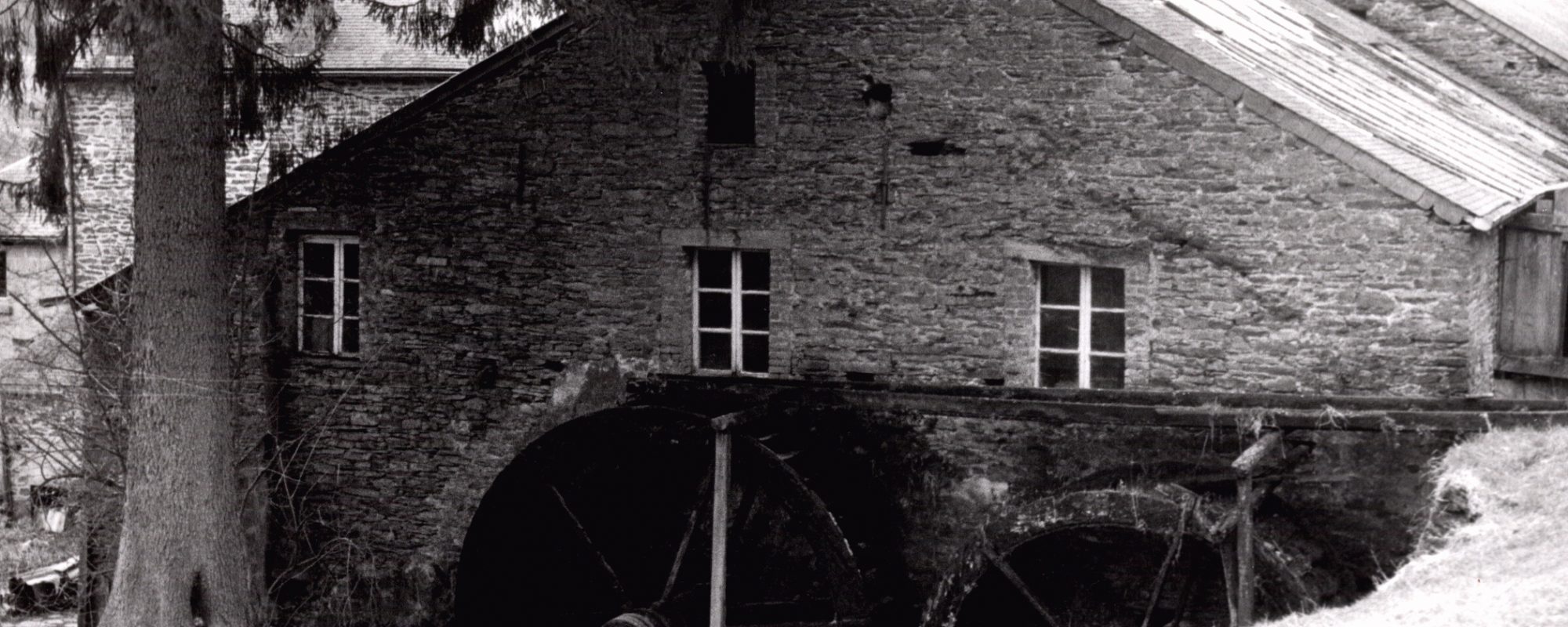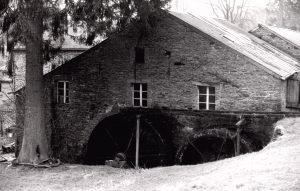Gros-Fays Mill
The origins of this former flour mill date back to at least 1619 and it was the site of local resistance during the Second World War.

The origins of this former flour mill date back to at least 1619 and it was the site of local resistance during the Second World War.

It was here, away from the village and depending on the power available from the Bonne Soc stream, that a flour mill was once built. An important element of rural life, it dates back to at least 1619, although it is certainly older. It had two waterwheels driving three pairs of millstones which, depending on their quality of stone and size, gave a product ranging from flour to cattle feed. Over the years, equipment was gradually added: a forge, a sawmill and a farm, providing the farmer with a diversified income.
In the 20th century, a steam engine made it possible to compensate for variations in the water flow and ensured the production of electricity for the sawmill. A generator even supplied the village with electricity before it was connected to the grid! This production ceased in 1967, leading to the disappearance of the wheels and the sawmill sheds.
Jean Gustin, a miller in Gros-Fays, was the heart of the local resistance during the Second World War. He recruited and trained several teams of maquisards and took part in numerous sabotages, such as the unbolting of some rails in the curved tunnel of Pondrôme and the sending, in pieces, of the train which had been stopped higher up towards Thanville. A huge roundup took place in the whole region on 25-26 May 1944. Many of them, like the Bourgmestres of Gros-Fays and Alle, remained in the concentration camps. A commemorative plaque on the mill recalls this sad period.
For more information, see our heritage sheet.
MOULIN DE GROS-FAYS
Gros-Fays, 28 – 5555 Gros-Fays
MAISON DU TOURISME DU PAYS DE BOUILLON EN ARDENNE
Quai des Saulx, 12 – 6830 Bouillon
+32(0)61/46 52 11
OFFICE DU TOURISME DE BIÈVRE
Rue de Bouillon, 39B – 5555 Bièvre
+32(0)61/29 20 92
The association Les Plus Beaux Villages de Wallonie (The Most Beautiful Villages of Wallonia) oversees a network of 32 villages, bearers of a strong territorial identity and reflecting traditional architecture. It is committed to promoting the rural, cultural and natural heritage of Wallonia and is a part of the development of local and responsible tourism.
More information